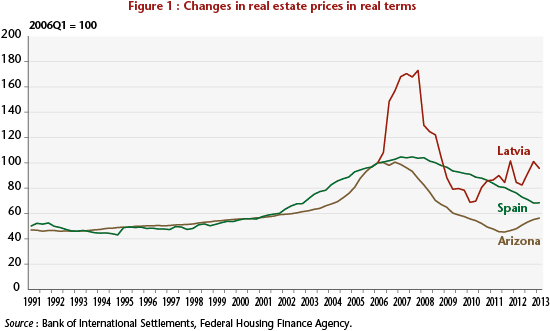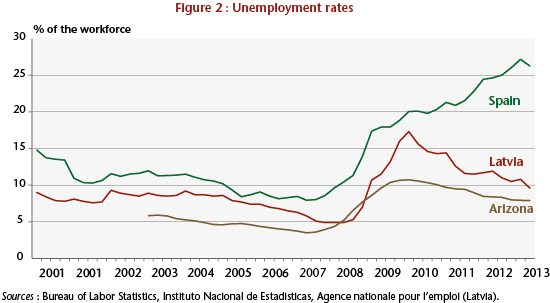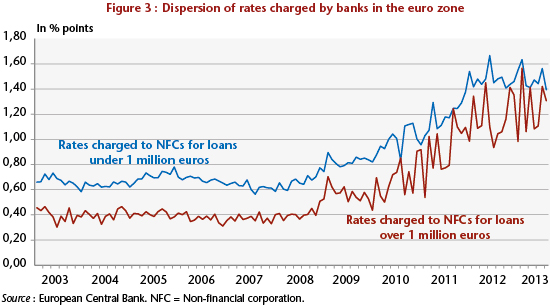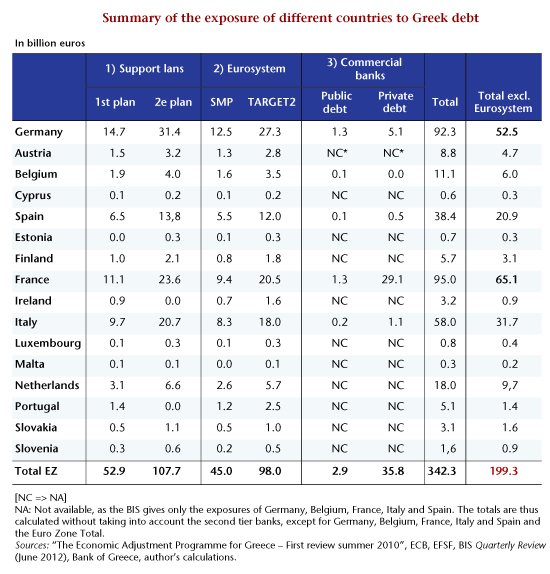What do we know about the end of monetary unions?
By Christophe Blot and Francesco Saraceno
The European elections were marked by low turnouts and increasing support for Eurosceptic parties. These two elements reflect a wave of mistrust vis-à-vis European institutions, which can also be seen in confidence surveys and in the increasingly loud debate about a return to national currencies. The controversy over a country leaving the euro zone or even the breakup of the monetary union itself started with the Greek crisis in 2010. It then grew more strident as the euro zone sank into crisis. The issue of leaving the euro is no longer taboo. If the creation of the euro was unprecedented in monetary history, its collapse would be none the less so. Indeed, an analysis of historical precedents in this field shows that they cannot serve as a point of comparison for the euro zone.
Although there seem to be a number of cases where monetary unions split apart, few are comparable to the European Monetary Union. Between 1865 and 1927, the Latin Monetary Union laid the foundations for closer monetary cooperation among its member states. This monetary arrangement involved a gold standard regime that established a principle of monetary uniformity with a guarantee that the currencies set up by each member state could move freely within the area. Given the absence of a single currency created ex nihilo as is the case today with the euro, the dissolution of the Union that occurred in 1927 holds little interest for the current debate. In fact, experts in monetary unions instead characterise this type of experience as “areas of common standards”. A study in 2007 by Andrew Rose (see here) assesses 69 cases of exits from a currency union since the Second World War, which would indicate that there is nothing unique about the break-up of the euro zone. However, this sample of countries that have left a currency union cannot really be used to draw meaningful lessons. A large number of these cases involve countries that gained their political independence in the process of decolonization. These were also small developing economies whose macroeconomic and financial situations are very different from those of France or Greece in 2014. The most recent experience was the break-up of the rouble zone, following the collapse of the USSR, and of Yugoslavia, both of which involved economies that were not very open commercially or financially to the rest of the world. In these circumstances, the impact on a country’s competitiveness or financial stability of a return to the national currency and any subsequent exchange rate adjustments are not commensurate with what would happen in the case of a return to the franc, the peseta or the lira. The relatively untroubled separation of the Czech Republic and Slovakia in 1993 also involved economies that were not very open. Finally, the experience most like that of the EMU undoubtedly involves the Austro-Hungarian Union, which lasted from 1867 to 1918. It had a common central bank in charge of monetary control but no fiscal union [1], with each State enjoying full budgetary prerogatives except with regard to expenditure on defence and foreign policy. It should be added that this Union as such could not go into debt, as the common budget had to be balanced. While the Union established trade and financial relations with many other countries, it is important to note that its break-up occurred in the very specific context of the First World War. It was thus on the ruins of the Austro-Hungarian Empire that new nations and new currencies were formed.
It must therefore be concluded that monetary history does not tell us much about what happens at the end of a monetary union. Given this, attempts to evaluate a scenario involving an exit from the euro are subject to a level of uncertainty that we would call “radical”. While it might be possible to identify certain positive or negative results of exiting the euro, going beyond this to give specific calculations of the costs and benefits of a break-up comes closer to writing fiction than to robust scientific analysis. As for the positive side, it can always be argued that the effects on competitiveness of a devaluation can be quantified. Eric Heyer and Bruno Ducoudré have performed such an exercise for a possible fall in the euro. But who can say how much the franc would depreciate in the case of an exit from the euro zone? How would other countries react if France left the euro zone? Would Spain leave too? In which case, how much would the peseta fall in value? The number of these variables and their potential interactions lead to such a multiplicity of scenarios that no economist can foresee the result in good faith, let alone calculate it. The exchange rates between the new European currencies would once again be determined by the markets. This could result in a panic comparable to the currency crisis experienced by the countries in the European Monetary System (EMS) in 1992.
And what about the debt of the private and public agents of the country (or countries) pulling out? The legal experts are divided about what share would be converted by force of law into the new currency (or currencies) and what would remain denominated in euros, which would add to agents’ debt burden. So it is likely that an exit would be followed by a proliferation of litigation, with unpredictable outcomes. After the Mexican crisis in 1994, and again during the Asian crisis in 1998, both of which were followed by devaluations, there was an increase in agents’ debt, including government debt. Devaluation could therefore increase the problems facing the public finances while also creating difficulties for the banking system, as a significant share of the debt of private agents is held abroad (see Anne-Laure Delatte). The risk of numerous private defaults could therefore be added to the risk of default on the public debt. How would one measure the magnitude of such impacts? Or the increase in the default rate? What about the risk that all or part of the banking system might collapse? How would depositors respond to a bank panic? What if they seek to prop up the value of their assets by keeping deposits in euros and opening accounts in countries that they consider safer? A wave of runs on deposits would follow, threatening the very stability of the banking system. It might be argued that, upon regaining autonomy for our monetary policy, the central bank would implement an ultra-expansionary policy, the State would gain some financial leeway, put an end to austerity and protect the banking system and French industry, and capital controls would be re-established in order to avoid a bank run … But once again, predicting how such a complex process would unfold amounts to astrology … And if the example of Argentina [2] in late 2001 is cited to argue that it is possible to recover from a currency crisis, the context in which the end of the “currency board” took place there should not be forgotten[3]: a deep financial, social and political crisis that does not really have a point of comparison, except perhaps Greece.
In these circumstances, we believe that attempting to assess the cost and benefits of leaving the euro leads to a sterile debate. The only question worth asking concerns the political and economic European project. The creation of the euro was a political choice – as would be its end. We must break with a sclerotic vision of a European debate that opposes proponents of leaving the euro to those who endlessly tout the success of European integration. There are many avenues open for reform, as has been demonstrated by some recent initiatives (Manifesto for a euro political union) as well as by the contributions collected in issue 134 of the Revue de l’OFCE entitled “Réformer l’Europe”. It is urgent that all European institutions (the new European Commission, the European Council, the European Parliament, but also the Eurogroup) take up these questions and rekindle the debate about the European project.
[1] For a more detailed analysis of comparisons that can be drawn between the European Monetary Union and Austro-Hungary, see Christophe Blot and Fabien Labondance (2013): “Réformer la zone euro: un retour d’expériences”, Revue du Marché Commun et de l’Union européenne, no. 566.
[2] Note that Argentina was not in a monetary union but rather under what was called a “currency board”. See here for a classification and description of various exchange rate regimes.
[3] See Jérôme Sgard (2002): “L’Argentine un an après: de la crise monétaire à la crise financière”, Lettre du Cepii, no. 218.



